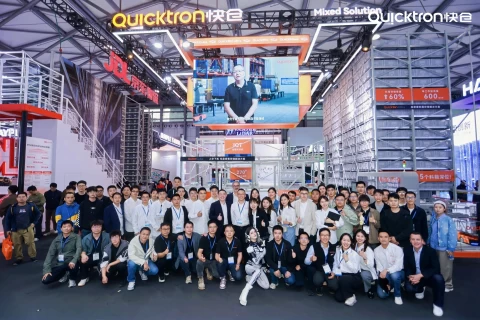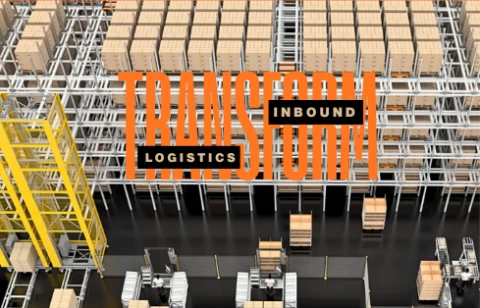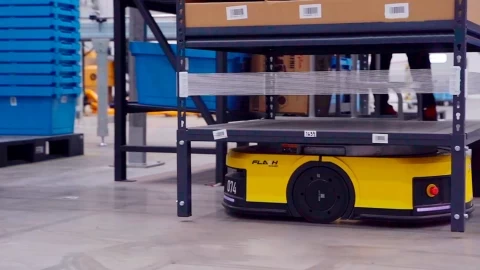Unveiling the ROI and Cost-Benefit Analysis of Autonomous Mobile Robots

The industrial landscape is undergoing a seismic shift. Manual labor, once the backbone of many industries, is being replaced by the swift and tireless automation of robots. But this isn't your grandfather's clunky factory robot. We're talking about a new breed of intelligent machines – mobile robots – that are revolutionizing operations with their agility, versatility, and unparalleled potential for ROI.
But before you jump on the bandwagon, it's crucial to understand not just the hype, but the hard numbers. How exactly do these mobile robots translate into financial gains? Are the benefits worth the investment? Let's dive deep into the ROI and cost-benefit analysis, unveiling the true power of mobile automation for your business.
Quantifying the Impact: A Multifaceted ROI Analysis
While the initial investment in mobile robots might seem daunting, the long-term benefits paint a compelling picture. Here's how these robots deliver measurable ROI across various aspects of your operation:

Productivity Powerhouse:
Repetitive tasks are the bane of human efficiency. Mobile robots, however, excel at them, freeing up your workforce to focus on higher-value activities. Studies show productivity gains ranging from 20% to a staggering 300%, depending on the application. Imagine your team churning out products three times faster – that's the power of mobile automation.
Labor Cost Optimization:
Robots don't get tired, don't demand overtime pay, and don't call in sick. By taking over repetitive tasks, they optimize your workforce, potentially reducing labor costs associated with overtime, staffing challenges, and employee turnover. In today's volatile labor market, that's a significant advantage.
Precision and Efficiency at Scale:
Unlike humans prone to fatigue and error, robots operate with unwavering precision and consistency. This translates to fewer defects, reduced waste, and minimized rework costs – all contributing to improved efficiency and cost savings. Imagine a production line churning out flawless products at lightning speed – that's the efficiency robots bring.
Space Savings:
AMRs free up valuable warehouse space, potentially lowering costs and boosting efficiency. Imagine tighter aisles, denser storage, and even smaller buildings - all leading to faster fulfillment and higher profits. For instance, the QuickBin or Hybrid Goods to Person systems offered by Quicktron Robotics can save up to 75% warehousing space as compared to manual operations. While initial costs exist, the space-saving ROI of AMRs is a treasure waiting to be unearthed.
24/7 Operations, Uninterrupted Productivity:
Unlike human workers who require breaks and rest, robots can operate continuously, 24/7. This is especially valuable in time-sensitive industries like healthcare or logistics, where uninterrupted operation is crucial. Imagine your robots working tirelessly around the clock, maximizing production and delivery – that's the uptime advantage robots offer.
Safety First, Efficiency Follows:
Humans are not designed for hazardous environments. But robots can handle them with ease, minimizing risks for your workforce and ensuring workplace safety. This translates to reduced injury rates, lower insurance costs, and a safer work environment for your employees. Safety isn't just a moral imperative; it's a cost-saving benefit too.
Case Studies:

Numbers speak volumes, but real-world stories paint an even clearer picture. Let's delve into specific industry examples showcasing how mobile robots have delivered tangible ROI:
Logistics and Warehousing:
- Cainiao (Alibaba Group): Deployed thousands of Quicktron robots, quadrupling warehouse productivity and reducing picking errors by 70 and a 3X increase in order fulfillment speed.
- Radial: Utilized Quicktron robots, increasing picking efficiency by 4X, processing millions of orders per month, and reducing labor costs by 40%. Quicktron offered a hybrid picking solution with which they accommodated totes and pallets in one operational area maximizing space utility and speed.
- Mondelēz: Snacks giant triples its warehouse productivity with robotics automation, resulting in $ 844K savings per year, 70% error reductions, and a 133% efficiency boost.
Manufacturing:
- Stellantis (Formerly PSA group): Integrated Quicktron robots for connecting manufacturing flows and assembly tasks, achieving a comprehensive reduction in cycle times with robots performing 20,000 transportation tasks per day, and improved product consistency.
- Mitsubishi: Implemented Quicktron robots for material handling. Robots create smooth production line connectivity, boosting safety and auxiliary material handling efficiency, leading to a 300% increase in production efficiency with cycle time reduced to 13 seconds all while reducing labor costs.
Healthcare:
- Cowell Health: Deployed Quicktron robots for medication delivery, reducing delivery times by 50% and improving medication fulfillment accuracy by 99.99%.
- Sinopharm: The pharmaceutical giant implemented Quicktron robots in its distribution center and achieved remarkable cost savings, eliminated product loss and picking errors, and increased efficiency by 150%.
These are just a few examples. The impact of mobile robots extends across diverse industries, from e-commerce and retail to manufacturing and logistics. Each case study reveals a unique story of how these robots optimize processes, boost productivity, and deliver significant ROI.
Beyond the Numbers: Intangible Benefits with Tangible Impact
While ROI is crucial, the benefits of mobile robots extend beyond mere numbers. They offer intangible advantages that contribute to your overall success:
Data Insights for Informed Decisions:
Robots don't just work; they gather valuable data as they operate. This data can be analyzed to identify bottlenecks, inefficiencies, and areas for improvement, empowering you to make data-driven decisions and optimize your operations further. Imagine having real-time insights into your workflow – that's the strategic advantage robots provide.

Flexibility to Adapt, Evolve, and Thrive:
Today's business landscape is dynamic, and mobile robots are built to adapt. They can be easily reprogrammed and repurposed for different tasks, making them ideal for changing workflows and evolving business needs. Imagine a robot that seamlessly adapts to new tasks – that's the flexibility advantage robots offer.
Brand Image Boost:
Innovation Attracts Talent and Customers: Embracing cutting-edge technology like mobile robots sends a strong message about your commitment to innovation and efficiency. This can attract top talent, impress customers, and elevate your brand image in an increasingly competitive market. Imagine showcasing your innovative robotic solutions – that's the brand advantage robots offer.
Cost-Benefit Analysis: A Balanced Approach

Before diving headfirst, it's crucial to conduct a thorough cost-benefit analysis specific to your application. Key factors to consider include:
- Initial Investment: Consider the robot's cost, deployment, integration, and training expenses.
- Operational Costs: Factor in ongoing maintenance, power consumption, and software licensing fees.
- ROI Timeframe: Understand the time it takes for the robot to generate positive returns based on your specific application and operational context.
Remember, ROI can vary significantly depending on several factors, including the industry, application, and specific robot model. Partner with a trusted robotics provider like Quicktron Robotics to conduct a detailed analysis and ensure you make the best investment decision for your business.
Contact us today at www.quicktron.com for a cost-benefit analysis based on your scenario-specific automation.

Arslan crafts compelling content, executes social media campaigns, and masters online ads, webinars, podcasts, and copywriting. He builds strong relationships with clients, empowering them with support and resources to achieve their sales goals. Leveraging data insights, he refines strategies and collaborates seamlessly to stay ahead of the digital curve.




